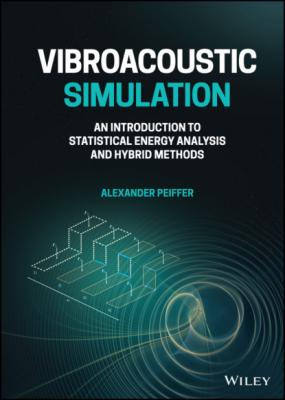Vibroacoustic Simulation. Alexander Peiffer
Чтение книги онлайн.
Читать онлайн книгу Vibroacoustic Simulation - Alexander Peiffer страница 30
 equations can be written in matrix form. The frequency domain matrix reads as
equations can be written in matrix form. The frequency domain matrix reads as
or in short form
The force excitation and displacement response matrix [H(ω)] corresponds to the inverse dynamic stiffness matrix of Equation (1.83).
1.7.1 Multiple Random Inputs
The contemplations in section 1.6.3 dealt with a single random input of one system. The cross spectrum or correlation was only applied to input and output. Imagine a system that has many sources that have random nature. In the case of a car this could be the exhaust noise, the cooling ventilation, and the engine. The noise linked to the stroke movement will be correlated to the component that is transmitted via the muffler to exhaust, whereas the flow noise generated by the turbulent flow in the muffler is not correlated to the stroke harmonics. Thus, in practical vibroacoustic systems there is a mix of sources that are correlated to each other. Some are independent – thus uncorrelated – and some are a mix of both, as the discussed exhaust example.
Equations (1.196) and (1.195) can only be used in case of fully correlated input because each summand in those equations will have a different phase or time delay for each set of input signals taken from the ensemble of possible input or for each separate test.
Consider a set of N random input signals as given in Equation (1.195) or (1.196). For the description of the input we need the power spectral density or autocorrelation of all signals fn(t) given by
Here the index ff denotes that only the input is considered, and nn that it is the autocorrelation of the nth input. In addition the cross correlation between the input signals is given by:
This expression is called the cross spectral density matrix that looks in large form
This is a hermitian matrix due to the symmetry relationship of cross spectra also following from the expected value of each spectral product
For further considerations it is helpful to write the cross spectral matrix using the input spectra in vector form. Because of the matrix multiplication notation – row times column – the cross spectral density matrix can be written as